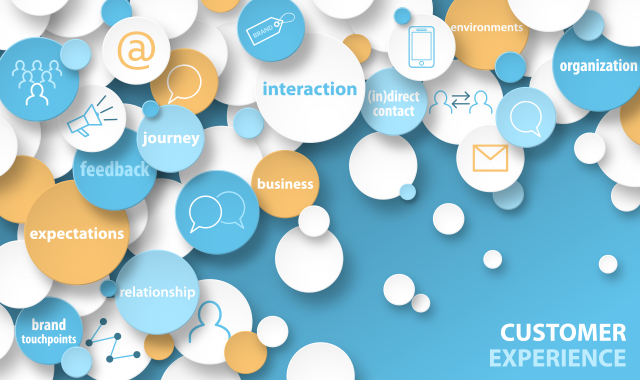Considering the Journey to Improved Customer Experience in Healthcare
For those healthcare organizations that embrace the idea of improving the consumer’s experience throughout their healthcare journey, there can be a payoff.

Bruce Arnold

There is a trend in healthcare toward customer-centrism-placing the interests of the consumer before all other considerations. The trend may be slow in its growth, but for those healthcare organizations that embrace the idea and obsess over improving the consumer’s experience throughout their healthcare journey, there can be a payoff. However, improving consumer experience in healthcare takes a commitment and courage to venture outside of traditional comfort zones.
For years, the polarized debate over healthcare policy has included advocacy for a more consumer-directed healthcare system. The argument in favor says consumers and providers alike must have more skin in the game-financial responsibility-and better information with which to make more consumer-like decisions. For providers, the “skin” means risk-based contracts. For consumers, it means higher deductibles and other out-of-pocket cost exposure. There has been significant movement in this direction.
A 2018 Centers for Disease Control and Prevention study showed adult enrollment in high-deductible health plans (HDHP), both with and without health savings accounts (HSA), increased significantly from 2007 through 2017. Roughly 19% of adults 18 to 64 years were enrolled in HDHP with HSA in 2017, up from 4.2% in 2007, while 24.5% were enrolled in HDHP without HSA, up from 10.6%.
The trend of risk-based provider contracting has not been as robust, according to a recent study, but more healthcare providers are participating in value-based payment arrangements and accepting more accountability for delivering outcomes and customer satisfaction. The US Centers for Medicare and Medicaid Services are continuing to work toward increased adoption of value-based healthcare and its measures to place patients at the center of the healthcare system.
Related: Payers Need to Work on Earning-and Keeping-Trust
Such steps are important for a few reasons: To bring about positive changes in health care-principally, higher quality at a lower cost-patients need to act more like more discerning consumers. And to get consumers to be more discerning, healthcare providers and insurers need to focus more on delivering for the customer. Increasingly, that means delivering not just the successful medical procedure but also a more consistent, seamless experience for the customer.
That’s a tall order for the U.S. healthcare system, which remains largely fragmented and lacking in the characteristics of a customer-driven industry, as numerous examples show. Fortunately for the healthcare consumer, we do not need to wait for the healthcare industry to organically develop customer-centric approaches. Other industries, especially retailers, are leading the way.
Customer experience expert Blake Morgan notes customer-centric companies are innovative disruptors who invest in new technology and building relationships, and they are rewarded for doing so. According to Morgan, those who make the investments to provide a superior customer experience generate 5.7 times more revenue than their competitors.
Research from Deloitte provides similar evidence of the benefits of improving the customer experience. According to the Deloitte Center for Health Solutions, hospitals that invest in improving patient experience realize better financial performance-greater revenue and profit margin-as well as stronger customer loyalty, reduced staff turnover, and lower malpractice risk.
Morgan describes being customer-centric as not so much doing a few customer-focused things but as embracing it as a “cultural way of life.” She says the first step to becoming more customer-centric is digital transformation.
“Technology isn’t everything, but increasingly, it plays a huge role in shaping our most beloved experiences,” she adds.
Retailers of consumer goods, in particular, have adopted technologies and strategies that empower and reward consumers for their purchasing behaviors and decisions. They have become more skilled in connecting with consumers and developing relationships that allow for more personalized customer experiences, generating greater customer loyalty, more business activity and greater profits.
The retailization of healthcare has been underway for some time, starting with healthcare providers making it easier for consumers to come to them through more convenient office hours, same-day appointments and locating clinics within employer locations and in shopping centers. Today, more customer-centric healthcare organizations are adopting technologies, such as telemedicine and mobile platforms, that bring healthcare to the individual consumer.
Continued customer-focused innovation is increasingly recognized as more than an opportunity for retaining customers and succeeding against the competition in healthcare; it is a strategic imperative. Perhaps it is not surprising, then, that two of the world’s biggest consumer-focused innovators, Apple and Amazon, are making bigger investments in healthcare.
Customer-centric healthcare organizations have changed their thinking and culture, more commonly today with the help of a chief consumer officer or chief experience officer. The innovative providers are adopting smart technologies and leveraging data to improve care and deliver a more cohesive, personalized experience for the consumer. As they progress, though, these healthcare organizations cannot lose sight of their fundamental responsibilities.
Simultaneous with adoption of customer-focused technologies and the customer-experience culture, innovators in healthcare must stay compliant with existing and emerging laws, regulations and ethical considerations, including those related to privacy and security. Empowering patients with information and opportunities to contribute to decisions and control their healthcare is essential, particularly as advancing technologies-such as artificial intelligence and machine learning-speed data processing and the delivery of care. Healthcare providers must help patients keep pace with the technology.
Extending the Capabilities of the EHR Through Automation
August 2nd 2023Welcome back to another episode of "Tuning In to the C-Suite," where Briana Contreras, an editor of Managed Healthcare Executive, had the pleasure of chatting with Cindy Gaines, chief clinical transformation officer at Lumeon.
Listen
Automate Your Practice's Workflows with These 5 Tools
October 4th 2023To maintain patient satisfaction and regulatory compliance and reduce potential clerical errors while maintaining high productivity, you can ease your staff’s burdens by automating your practice’s workflows and empower your staff to do more in less time.
Read More